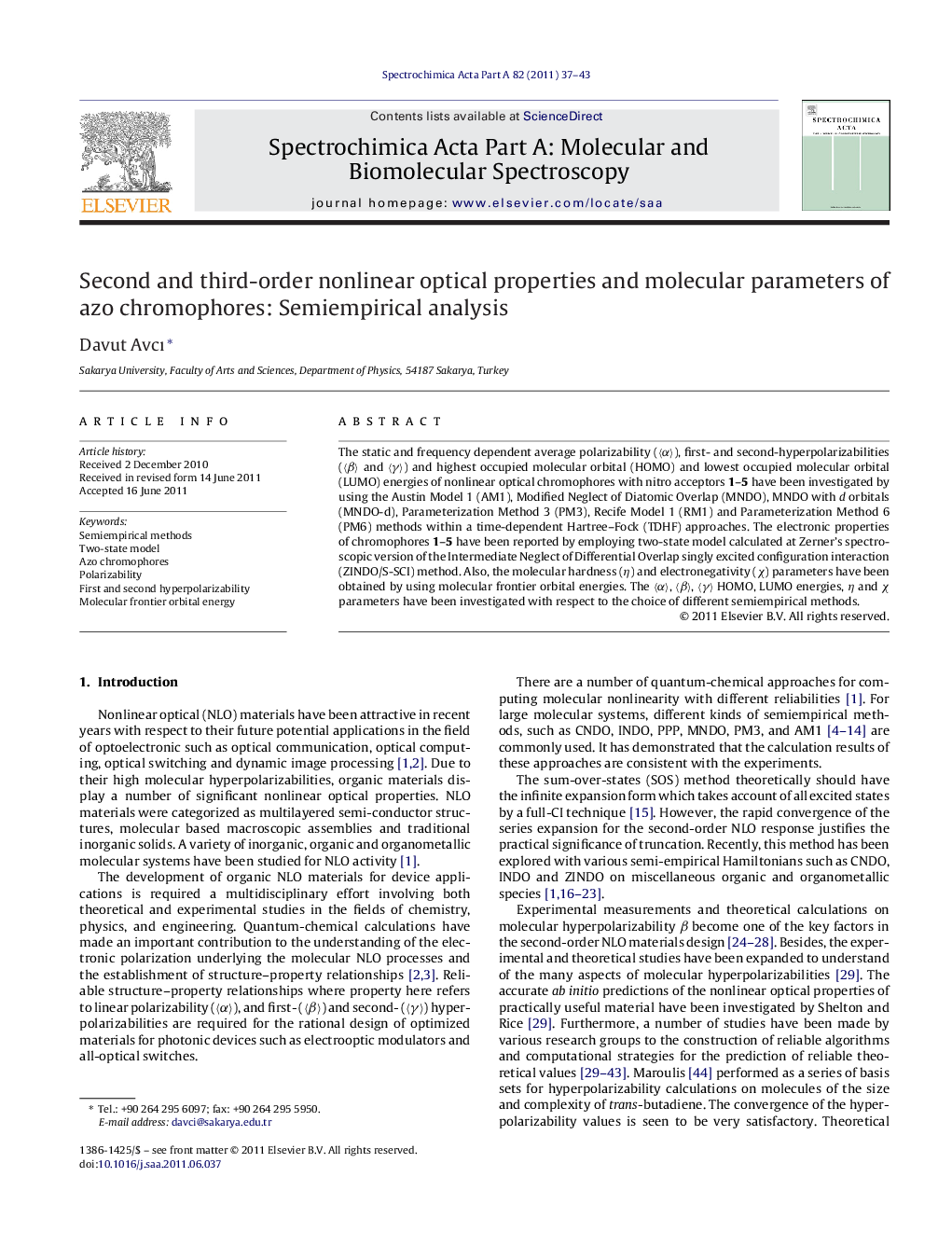| کد مقاله | کد نشریه | سال انتشار | مقاله انگلیسی | نسخه تمام متن |
|---|---|---|---|---|
| 1233267 | 968806 | 2011 | 7 صفحه PDF | دانلود رایگان |

The static and frequency dependent average polarizability (〈α〉), first- and second-hyperpolarizabilities (〈β〉 and 〈γ〉) and highest occupied molecular orbital (HOMO) and lowest occupied molecular orbital (LUMO) energies of nonlinear optical chromophores with nitro acceptors 1–5 have been investigated by using the Austin Model 1 (AM1), Modified Neglect of Diatomic Overlap (MNDO), MNDO with d orbitals (MNDO-d), Parameterization Method 3 (PM3), Recife Model 1 (RM1) and Parameterization Method 6 (PM6) methods within a time-dependent Hartree–Fock (TDHF) approaches. The electronic properties of chromophores 1–5 have been reported by employing two-state model calculated at Zerner's spectroscopic version of the Intermediate Neglect of Differential Overlap singly excited configuration interaction (ZINDO/S-SCI) method. Also, the molecular hardness (η) and electronegativity (χ) parameters have been obtained by using molecular frontier orbital energies. The 〈α〉, 〈β〉, 〈γ〉 HOMO, LUMO energies, η and χ parameters have been investigated with respect to the choice of different semiempirical methods.
3D isosurface plot of the molecular electrostatic potential chromophores 1—5 with ZINDO/S-SCI level.Figure optionsDownload as PowerPoint slideHighlights
► The accuracy of MNDO and MNDO-d methods first- and second-hyperpolarizabilities are very poor, especially for the first hyperpolarizabilities.
► The electrostatic potential plots show (for chromophores 1—5 using ZINDO/S-SCI level) the distribution of charge of choromophores is in the order of 3<2<5<4<1 with respect to the difference between positive and negative charge.
► The strong dihydroxyl donor and effective intermolecular charge transfer of chromophores 1 and 2 shows large second- and third-order nonlinearity.
► The azo compound can be used as an effective π-bridge in the design of new organic NLO molecules.
Journal: Spectrochimica Acta Part A: Molecular and Biomolecular Spectroscopy - Volume 82, Issue 1, November 2011, Pages 37–43